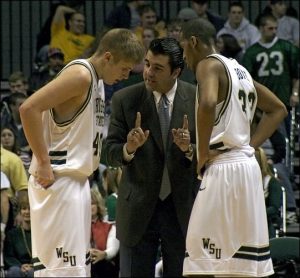
GUEST POST from Janet Sernack
In our last article, we described why innovation is transformational, and why, at this moment in time, it is more important than ever to innovate. We stated that innovation-led growth is absolutely critical and that people need to be enabled and equipped to adapt, connect and collaborate in new ways to kickstart change in agile, constructive, equitable, and sustainable ways to innovate in uncertain times. Yet, our research and experience at ImagineNation™ over the past 10 years has revealed that many governments, communities, organizations, teams, and leaders, feel somewhat – but not very – confident in their readiness, competence, and capacity to change and innovate in a world of unknowns.
Six Strategies to Kickstart Change and Innovate in Uncertain Times
To help build this confidence we have identified six key strategies and the key first steps to help you focus your attention, kickstart change, and drive and execute your change and innovation initiatives, to survive, thrive, and flourish in uncertain times.
Strategy #1
Build change readiness and receptivity to survive and thrive in an uncertain world by:
- Giving people permission and safety that allows them to accept and acknowledge the range of emotional reactions (fears), physical consequences (exhaustion), and work-life imbalances as a result of the imposed WFH environment.
- Acknowledging how people are feeling helps them better re-balance, adapt, and become resilient by supporting them to develop a work-life balance to better connect with others, tolerate uncertainty to change, and innovate in uncertain times.
- Challenging people’s habitual default patterns of remaining in the safety of their comfort zones, breaking habitual “business as usual” habits, inertia, and complacency.
- Being empathic and compassionate with people’s anxieties, confusion, insecurity, and uncertainties about their futures at work, and supporting them through their personal conflicts.
Strategy #2
Allow, accept and ack knowledge people’s fears and struggles about change, help manage their anxiety, improve their productivity and attune them to the possibilities and potential opportunities in the current business environment by:
- Providing individual and collective support to enable people to take back and refocus their attention, self-manage anxiety, and become grounded, mindful, and fully present, with self and with others.
- Investing in time and money to enable people to unlearn, learn and relearn how to be change ready and change-receptive, and become adaptive to effectively facilitate successful business and digital transformation initiatives.
- Helping people get familiar with the brain’s basic cognitive functions, and build the foundations to help get work done by regulating emotions, suppressing biases, switching tasks, solving complex problems, and thinking creatively.
- Developing 21st-century skills to shift old mindsets, develop new behaviors and the reasoning, problem-solving, planning, and execution skills to initiate and sustain business, cultural and digital transformation initiatives to embed the changes and to innovate in uncertain times.
- Developing the fundamental foresight and energizing vision to perceive innovation strategically and systemically, adopting an approach that is holistic, human, and technology-centered, to align, enable, and equip people to adapt and grow and to change and innovate in uncertain times.
Strategy #3
Make sense of innovation, and develop a common understanding and language as to what innovation means in a unique context by:
- Developing an awareness that innovation is, in itself, a change process, and paradoxically requires rigorous and disciplined change management processes and a chaotic creative and collaborative interchange of ideas.
- Clarifying an energizing and compelling “why” innovation is important to an overall “cause” developing a passionate purpose and a sense of urgency towards leveraging innovation to achieve long-term success, competitiveness, and growth.
- Knowing how to both make connections and distinguish and leverage the differences between creativity, invention, and innovation.
- Building the safety, permission, and trust that helps facilitate, educate and coach people to deal with the emotional consequences of failure, to reframe it as opportunities to encourage a culture of taking small bets to learn quickly.
- Taking a disciplined and methodical approach to risk planning and management, that allows and encourages a culture of smart risk-taking to reduce risk adversity.
- Creating a consistent and common understanding as to what innovation means in their unique government, community, social, organizational, leadership, or team context and creating an engaging and compelling narrative around it.
Strategy #4
Optimize the notion that innovation is transformational and leverage it as an overall energizing strategic and systemic alignment mechanism and set of processes to kickstart change by:
- Improving engagement, energizing and maximizing people’s potential and intentionally cultivating their collective genius to learn how to execute and deliver deep change and innovate in uncertain times.
- Aligning technological, processes and adopting a human-centered structure for change management to deliver business breakthroughs and digital transformation initiatives.
- Breaking down silos and supporting people to collaborate; re-connect, re-energize and re-invent themselves in a disrupted world.
- Maximizing differences and diversity that exist between people’s demographics, cultures, values, perspectives, knowledge, experiences, and skillsets to deliver their desired outcomes.
- Learning and coaching people to adapt to survive and thrive by solving complex problems, uncertainty, instability, and trends that are constantly emerging.
- Improving both customer centricity and the customers’ experience.
- Building accountable, equitable, and sustainable business enterprises that people value, appreciate, and cherish.
Strategy #5
Challenge the status quo and conventional ways of perceiving innovation to unleash the possibilities and the opportunities and kickstart change that true innovation offers by:
- Taking a strategic perspective in the longer term and the need for investment in innovation, rather than being reactive, and short-term profit-focused.
- Developing an understanding of the different types of innovation and how they can be applied, including incremental, breakthrough, sustaining, and disruptive, depending on their strategic imperative and motivation for change, and not just focussing on making continuous and process improvements.
- Improving trust in organizational boards and leadership decisions, reducing self-interest and eliminating corruption, and focussing on being in integrity to successfully empower people in change and innovate in uncertain times.
Strategy #6
Explore opportunities for measuring, benchmarking, and contextualizing the impact of innovation on business performance, leadership, executive team, and organizational ability to adapt, innovate and grow by:
- Embracing new business models, developing leadership capabilities and collaborative competencies, capacities, and building people’s confidence to perceive their worlds differently, and with fresh eyes.
- Letting go of “old” 20th century methods of diagnosing and assessing culture, based solely on the “nice to haves” rather than exploring the emerging “must haves” to enable people to survive and thrive by experimenting with new assessment tools like the OGI® and the GLI® to quantify and qualify current and potential strengths and weaknesses.
- Using data to know what new mindsets, behaviors, and skills to embody and enact, differently to become future-fit and succeed in the 21st century, and accepting that some of these are “not nice”.
- Cultivating an innovation culture to embed deep change, provide learning and coaching to evoke, provoke and create mindset shifts, behavior and systems changes, and radically new sets of artifacts and symbols.
Taking the first steps to change and innovate in 2023
Embracing a range of new and different strategic and systemic approaches governments, communities, organizations, teams, and leader organizations can successfully kickstart change and innovate in uncertain times.
By using this moment in time to choose to refuse to walk backward and sleepwalk through life, by simply committing to take the first baby steps in allowing and enabling people to pause, retreat, reflect and:
- Recover from the effects of working mostly alone, from home, and online.
- Re-balance work and home lives through reconnection and resolving loneliness and rebuilding a sense of belonging.
- Know how to tolerate uncertainty and become resilient and adaptive.
- Reimagine and refocus a more energizing, compelling, and sustainable future.
- Reinvent themselves, their professions, business practices, and teams in meaningful and purposeful ways.
We can then confidently, meaningfully, and purposefully energetically engage and enroll people, mobilize and harness their collective genius, to innovate in uncertain times in ways that add value to the quality of people’s lives in ways they appreciate and cherish.
To kickstart changes that contribute effectively to global stability, security, connectedness, and sustainability in the current decade of transformation and disruption.
Find out about our collective, learning products and tools, including The Coach for Innovators, Leaders, and Teams Certified Program, presented by Janet Sernack, is a collaborative, intimate, and deeply personalized innovation coaching and learning program, supported by a global group of peers over 9-weeks, starting Tuesday, February 7, 2023.
It is a blended and transformational change and learning program that will give you a deep understanding of the language, principles, and applications of an ecosystem focus, human-centric approach, and emergent structure (Theory U) to innovation, and upskill people and teams and develop their future fitness, within your unique innovation context. Find out more about our products and tools.
Image Credit: Unsplash
![]() Sign up here to get Human-Centered Change & Innovation Weekly delivered to your inbox every week.
Sign up here to get Human-Centered Change & Innovation Weekly delivered to your inbox every week.
 Innovation is not a solo activity. While the rare lone genius may be able to invent something on their own (although still always inspired by others), nobody can innovate by themselves. Innovation, by its very nature, requires collaboration.
Innovation is not a solo activity. While the rare lone genius may be able to invent something on their own (although still always inspired by others), nobody can innovate by themselves. Innovation, by its very nature, requires collaboration. What does an innovation coach look like?
What does an innovation coach look like?
